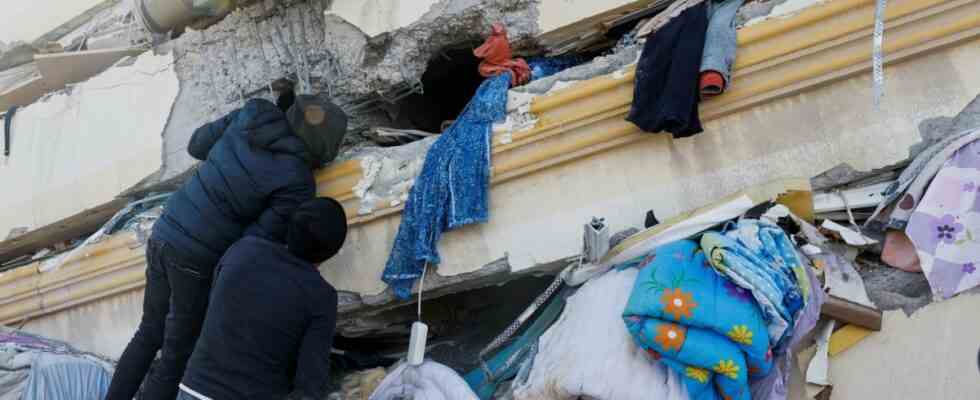8,000 people have already been rescued from the rubble of the earthquake in Turkey, said Turkish Vice President Fuat Oktay on Tuesday. But many people are still missing. “The first 72 hours are crucial,” says Bernd Böttiger, a doctor with the German Red Cross (DRK). Those who are not rescued during this time, their chances of survival drop drastically. In 2005, after an earthquake in Pakistan, a woman is said to have survived two months under rubble with the help of leftover food and rainwater. But such stories are the wondrous exception.
“Anyone who was buried directly in the first earthquake in Turkey or Syria and has still not been rescued is running out of time,” says Böttiger. How long a person can endure under rubble depends on many factors. Basically, the better the general state of health, the longer a person can survive buried. The survival period varies between eight hours and two weeks. The fat reserves in the body play a decisive role. They protect the organs and enable the body to produce and store heat itself through trembling. Children and old people usually have less body fat and are therefore more prone to hypothermia.
An adult can go two to three days without liquid
According to Stephan Prückner, Managing Director of the Institute for Emergency Medicine and Medical Management at the Munich Ludwig Maximilian University Hospital, the current weather in Syria and Turkey increases the risk of people trapped by the cold getting cold. Freezing temperatures can kill within eight to 24 hours when wearing light clothing. “Due to the drop in blood pressure and the slowed heartbeat, cardiac arrhythmias and circulatory arrests often occur during this time,” says Prückner. Rain, wind and cold surfaces, such as concrete slabs, can accelerate the cooling process.
It is particularly tragic when it comes to the so-called salvage death: A person dies after being rescued from hypothermia. One possible cause is that warm and cold blood mixes during the rescue due to the sudden movement of the body, which has been rigid for days. This causes the overall body temperature to drop and can lead to ventricular fibrillation and ultimately death.
In principle, buried adults usually survive longer than children. Due to their small body size, however, children would often find space in the gaps between rubble. Houses often collapse floor by floor during earthquakes. This can create cavities between the panels, allowing victims to have more oxygen and avoid crushing, thereby increasing their survival time as well.
Adults without previous illnesses would not be able to drink any liquid for two to three days. According to Böttiger, they could even survive for up to two weeks without food. However, those who suffer from injuries and, above all, the blood loss associated with them, could also be at the end of their strength much faster.

